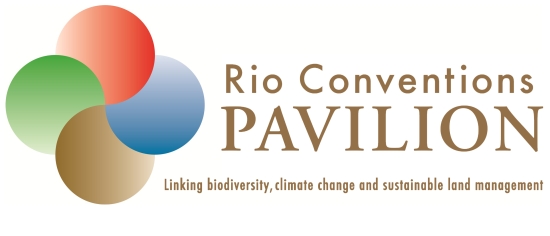Summary of proceedings for Rio Conventions Pavilion UNCCD COP 12 - 15 October 2015 Sustainable Development Goals Day (GEF, WRI and ICRAF)
 Thursday, October 15, 2015 at 01:49PM
Thursday, October 15, 2015 at 01:49PM
Today’s RCP session opened with a bang as Dennis Garrity, UNCCD drylands Ambassador, explored the ins and outs of Evergreen Agriculture. The audience learned the specifics of what it is, as well as how it contributes to achieving Land Degradation Neutrality (LDN) and the Sustainable Development Goals (SDG’s). Evergreen Agriculture’s techniques are varied, but dovetail with conservation agriculture, pastoralism, and other production systems. In a panel discussion, representatives of the African Union Commission, EcoAgriculture Partners, FAO, the GEF and IUCN, showed their support for this approach. The techniques integrate well with global restoration initiatives like the Great Green Wall, the Bonn Challenge and the New York Declaration on Forests. It is important to add that GEF financing would be able to support it. Just before the lunch break civil society organizations (CSOs) discussed their role in achieving the SDGs. Panelists explored agroecology in different parts of Africa, presented a project across 11 Sahel countries which promotes the collection of acacia gum, and evaluated synergies between the different Rio conventions. Privileging genetic diversity, agroecology uses a multidimensional approach to address the challenges of rural development. Further, this method is an effective way to halt land degradation, deal with food security issues and achieve SDG 15. SOS-Sahel’s project to promote acacia harvesting shows the importance of education and access to markets for farmers in order to create income opportunities. The panelists pressed that the Rio Conventions must coordinate between themselves in the future, instead of working in separate silos.
Over the lunch hour, a model for assessing and addressing land degradation issues based on public health policy was presented. Lessons learned from the health sector can help define and measure dynamic conditions of land degradation. Because land degradation is caused by so many factors, as are many preventable diseases, it can be assessed with risk models used by the public health sector. Evaluating the cost effectiveness land degradation interventions could use similar preventative public health models and tools already in use. Landpotential.org, an online and mobile phone platform for land monitoring was presented as complementary to this. The tools concerning soil data and crop production are available to farmers via mobile phones and can analyse plants and soil at the same time. Excitingly, actors around the world are able to develop custom applications and databases according to their own needs by using open source code. The private sector is also a possible partner.
People meandered into the cool Pavilion shade in the afternoon to listen to Clinton Muller open a discussion about Landcare. This landscape approach to sustainable land management and restoration takes the notion of social capital seriously. Landcare is based on integrated natural resource management, is community based, develops sustainable livelihoods using empowerment strategies – all while developing capacity at the government, community and individual level. It builds active partnerships and integrates government policies. Presenters discussed how Landcare has been implemented in Iceland and South Africa, including a transboundary project with Namibia and Botswana. All projects were successful in mobilising communities but did require government engagement. Commenting on Landcare, Dennis Garrity raised the potential challenges of integrating it with large scale restoration projects the international community is rolling out. There is a need to find ways to reconcile the bottom-up community driven approach of Landcare with top-down logic of large projects.
The day closed with an impassioned speech by Monique Barbut, Executive Secretary of the UNCCD, and former CEO for the GEF. She said the GEF is uniquely positioned to realise synergy between the three Rio Conventions. Given the importance of land to improving livelihoods around the world, she said it should be mentioned not only in the context of target 15.3, but a number of other SDGs. As the SDGs are implemented, she said, we must be certain they are delivered in drylands countries. GEF Secretariat gave presentations that outlined GEF support and integration with the SDGs. A review of GEF programming, including the GEF-6 replenishment, showed the alignment of focal areas with the SDGs. A presentation on the Land Degradation Focal Area and the SDGs outlined the integrated delivery model of the GEF-6 strategy that adds themes from the SDGs. GEF activities focus on food security, climate smart agriculture and sustainable land management. The success of the GEF-China Partnership for land restoration, begun in 2002, was explained by a representative of China.
Wrapping up discussions, Ulrich Apel of the GEF said this day showed the strength and usefulness of the Rio Pavilion as a place to bring together perspectives of CSOs, the GEF, agriculture and others. Delegates continued the discussion over a delicious dinner buffet.

